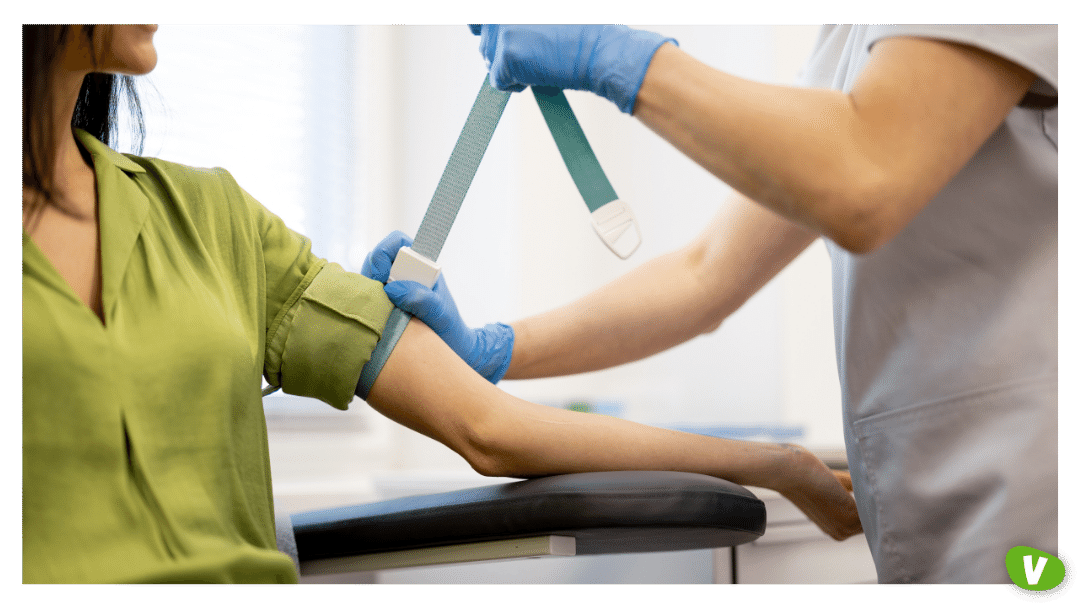If you’re getting ready for your first STI test, you might be nervous about the unknown – but you shouldn’t be.
Though STI testing is a routine procedure, it’s barely spoken about and surrounded by myths. We want to set the record straight.
- What happens at an STI test
- STI test results
- At-home STI testing
- When should you take an STI test?
- The takeaway
Keep reading to discover what happens in STI tests, how to access home tests, and how often you should get tested.
What happens at an STI test
One of the number one questions about STI testing is, “What actually happens during an STI test?”
If STI testing conjures up images of medieval medical tools and outdated practices, we have some news that will put your mind at rest – the procedure only requires a small swab, urine, or blood test. The method your healthcare professional will use depends on which STIs you’re testing for and your health history. A quick swab test is the most common. You’ll likely take this yourself in a private room.
The healthcare provider will ask you personal questions about your sexual history and symptoms. These are 100% confidential, and they’re only asking them to determine which tests are necessary and whether you’re a candidate for other services (e.g. birth control). Your provider can’t tell anyone else your answers; your information is stored securely.
Common questions include:
- Have you had unprotected sex?
- When did you last have sex?
- Why do you think you have an infection?
- What symptoms do you have?
Sometimes, a healthcare provider will also perform a physical examination to check for symptoms or complications. If this is the case, they’ll ask whether you want a chaperone in the room. You can refuse the exam if you’re not comfortable. However, getting checked out is always a good idea – a professional might catch something you haven’t noticed.
STI tests are rapid procedures. You’ll be in and out within 10 to 15 minutes. Once you’re done, treat yourself to a coffee or snack and indulge in self-care.
Do STI tests hurt?
No, STI tests aren’t painful. Swab tests might cause a slight sensation of pressure, but there will only be pain if the area is inflamed – a common symptom of STIs.
You’ll experience a slight pinch or discomfort if you get a blood test. But this is minimal and only lasts for a few seconds. There shouldn’t be any pain afterwards.
Notify your healthcare provider if you experience severe pain during or after the test.
Requesting a male/female healthcare provider
You can request a male or female healthcare provider if it makes you feel more comfortable. This is a normal request, so don’t feel shy about advocating for your needs. However, you might have to wait longer for your test if your preferred provider is busy.

STI test results
Once the STI test is complete, you’ll be free to continue with your day.
You’ll usually have to wait up to ten working days for the results (but generally less), so it’s best to try not to dwell on “what ifs” until you get the official results. Some tests even provide a same-day result. When in doubt, double-check with your healthcare provider to ensure you know when you’ll get the results.
Most sexual health clinics deliver results as a text message. You don’t need to do anything else if your tests are negative. If you receive a positive result, you must go back to the clinic or doctors to discuss your treatment plan.
STI treatment plans typically involve a short course of antibiotics. You’ll also receive resources with information about safe sex and some condoms. Some infections (e.g. HIV) have treatments but no cure. Your healthcare team will advise you if needed and put you in touch with a counsellor.
Do I need to notify my past partners?
You should notify your past and current sexual partners if you receive a positive STI test. This is so they can get tested and treated as well. Sometimes, STIs have no symptoms but can cause long-term complications. Notifying ex-partners helps them look after their health and avoid health issues further down the road.
Texting past partners isn’t possible for everyone. If you don’t want to contact them, your clinic might do it on your behalf – this service is called “partner notification”. The clinic won’t reveal your information, and it’s 100% anonymous.

At-home STI testing
While GUM and sexual health clinics provide extensive STI testing services, they’re not your only option. You can also get STI tests from your GP, a pharmacy, a community contraception clinic, or home tests.
Home STI testing is an excellent option to test in a private environment. However, not all home STI testing kits are free, and they don’t test for as many STIs as tests at sexual health clinics. They also don’t give bespoke advice or referrals to other services.
The best home STI testing services include:
- Sexual Health London – Discreet and free sexual health tests for Londoners
- Lloyds Pharmacy Sexual Health Tests – These tests cost money but cover a wide range of diseases, and you receive the results in 3 working days
- The Sexual Health Hub – Free STI testing kits for eligible people in specific catchment areas. If you’re not in the area, the team will refer you to your nearest sexual health centre
When should you take an STI test?
You should take an STI test as soon as possible if you have symptoms of STI. You should also get tested if you’ve had unprotected sex, if an ex-partner tests positive, or if you’ve changed partners frequently.
It’s also good practice to get tested every three to six months if you have multiple partners. This is just to ensure you’re safe and healthy, as STIs don’t always present with symptoms.
Getting tested can be an empowering experience. It allows you to take care of your health and help those you’re intimate with.
The takeaway
Whether it’s your first STI test or not, it’s completely normal to be nervous. Hopefully, this guide has provided more insight into the testing process and helped you learn what to expect.
Explore more sex and well-being content on the Vivastreet blog now.





